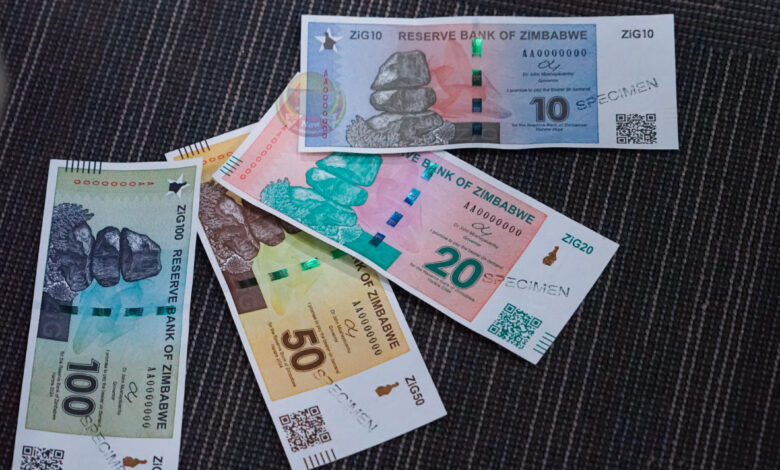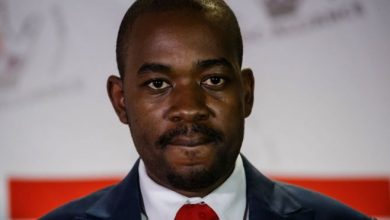Ruto praises Zimbabwe’s “brave” move to ZiG

The Zimbabwean government’s introduction of the new gold-backed currency, the ZiG, was a brave economic and well-intentioned decision to ignite the country’s transformation and recovery program, Kenyan President Dr William Ruto has said.
Ruto added that Zimbabwe’s rich and abundant natural resources, which represent “tremendous wealth,” should also back the ZiG currency.
The ZiG was introduced on April 5, 2024, to replace the Zimbabwe Dollar (ZWL), whose frequent and rapid depreciation has seen the United States dollar become the preferred currency for transactions in the country.
The US dollar was reportedly used in more than 80 percent of transactions in Zimbabwe last year, and Vice President Constantino Chiwenga recently said Zimbabwe’s new currency is a step toward eventually abandoning the use of US dollars in the economy.
Commenting on the new ZiG currency while officiating at the 64th edition of the Zimbabwe International Trade Fair (ZITF) in Bulawayo on Saturday, the Kenyan leader said the Zimbabwean government’s decision to introduce a new currency would greatly contribute to the country’s economic resurgence.
“The third intervention, which confirms Zimbabwe’s commitment to economic recovery and transformation, is its government’s decision to introduce a new currency, the ZiG, which is backed by gold and other asset results. This radical revitalisation of Zimbabwe’s monetary policy will contribute greatly to the country’s economic resurgence,” Ruto said.
Ruto claimed introducing the ZiG was a brave and radical strategy for economic recovery that would lead the country to prosperity and sustainability.
“Taken together, these bold decisions by the Government of Zimbabwe constitute a bold and radical economic recovery, revitalisation, and reform agenda based on a coherent, ambitious vision to steer the nation to prosperity and sustainability in a context where you have daunting challenges,” said the Kenyan president.
“This is courageous, brave, and Mr President (Emmerson Mnangagwa), visionary.”
Using this step as a basis, the Kenyan president said he was strongly persuaded that Zimbabwe’s commitment to transform its immense potential into sustainable abundance is robust and driven by irrevocable intentionality.
“I am also convinced that this intentionality is closely connected with the vision and the theme of the ZITF,” he said.
Ruto said it is well known that economies that possess technologies reap much more from their resource endowments than those without and that it is also a fact that innovation is the secret recipe for transformation.
“Innovation produces new inventions, transforms existing technologies, and enables every sector to produce more, faster, better, and surer out of every input and every unit of input,” he said.
“Innovation empowers technologies and processes to achieve more in terms of volume and variety, making it easier to satisfy demand and offer different choices. It reduces waiting times leading to higher levels of satisfaction and enables producers to attain and maintain higher standards.”
Ruto added that innovation guarantees both consistency and security, making both consumers and producers sure about their expectations.
“An economy anchored on innovation-driven efficiency becomes and stays competitive and guarantees high returns for all stakeholders,” he said.
The Kenyan leader said Zimbabwe’s diverse and plentiful natural resources present tremendous wealth, and it is appropriate that they should be deployed to back the national ZiG currency. These range from renewable energy potential, including hydro, wind, and geothermal, as well as arable land and carbon sinks, to substantial resources reserves of coal, carbon, copper, gold, iron, lead, lime, limestone, lithium, nickel, phosphate, platinum, silver, tantalum, tin, tungsten, and zinc, Ruto listed.
“There is no doubt these results present tremendous wealth, and it is appropriate that they should be deployed to back the national currency. More critically, technology-enhanced by innovation will certainly deliver far greater value for Zimbabwe’s economy from these natural resources.”
Regarding Zimbabwe’s potential, Ruto said Zimbabwe exemplifies Africa’s best-case scenario, having a population with a median age of just under 18.
“(Zimbabwe) is a young nation owing to one of Africa’s best literacy rates at 89.85 percent; it is populated by well-educated, highly skilled young people whose drive and motivation is unmistakable and compelling for any looking towards Zimbabwean,” he said.
“You will agree with me that in the case of a country endowed with such excellent human capital and natural resource potential as Zimbabwe, whose government is committed to sustaining investment in infrastructural connectivity and is inspired by a bold, coherent vision of national economic transformation, the sky is surely the limit if it pursues innovation as a catalyst of industrialization and trade,” he said.
The visiting president stated how innovation will enable every sector of their countries’ economies to harness the power of automation and robotics as well as digitization, artificial intelligence, and machine learning, which he said are revolutionising productivity and redefining the future of work every minute in every space at all times.
“Because with innovation, barriers become bridges, borders transformed Into portals and challenges turned into opportunities. There is no doubt that ZITF represents this country’s preparedness to usher in a new era of development driven by the countries, human and natural resources equally.”
Ruto said the theme of this year’s ZITF is also a bold signal of Zimbabwe’s results in deploying technology and innovation to transform its potential into shared abundance for all its people.
“The level of coherence and alignment evident in Zimbabwe’s new development strategy is indicative of an underlying policy of structural reform to produce the set of conditions necessary for transformation to take place,” he said, adding that potential investors must start paying close attention to reforms related to trade and investment, “lest they miss out on highly beneficial incentives that I can see in this trade fair. I believe this is the primary purpose of an event like this.”






